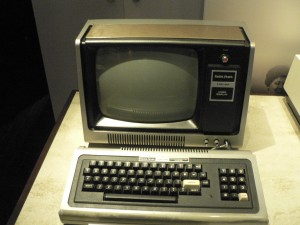I came home to find the new copy of RED, the Seneca College Alumni magazine in my mailbox. I am proud of my association with Seneca, and not because it led directly to my job at Royal St. George’s, but also because I believe there is a place for colleges in the post-secondary menu of choices for our students.
The new issue of RED features a cover story on Seneca’s relationship to the open source movement, specifically through a new NSERC Industrial Research Chair and ongoing relationships with Mozilla and Red Hat. The Centre for the Development of Open Technology at Seneca@York allows students to research and create open source software.
The article got me thinking again about the role programming plays in our curriculum. As 21st century educators, we use technology in meaningful ways and we encourage our students to exceed their potential through new, tech-infused methods of research and expression, but do we explore what is behind all this technology in any meaningful way? I sometimes think tech integrators and computer science teachers function as two solitudes.

At RSGC, our senior master Chris D’Arcy, has established a strong applied technology program that focuses on hardware and software. You can check out his programs here. Chris told me today that several RSGC old boys, now in their late 20s, have come by looking for students talented in coding to assist them in launching various small businesses. Even though computer science enrollments are increasing again, it is still tough to find people with this skill.
As a co-curricular activity I have run a programming club for middle school students using Scratch, the visually-based programming language from MIT. I have also done a short unit on Scratch in the course I teach, TGJ2O, Communications Technology, to drive home the point that users of “production software” like Photoshop need to understand what is going on beneath the surface.
I would like to know if the differences between programming and 21st century skills instruction are as wide as it seems. If you have a different story to tell, please do in the comments.
Having just attended the Google Teacher Academy in New York I had the pleasure of spending two days in their headquarters – the Google Plex. I could not help but notice that on everyone’s screens was code. If you worked for Google you knew how to code. It was clear that this is the language of now. I am envious of those who can Create something out of nothing with lines of logic and those who can solve problems through ingenuity and programming. I believe all schools should start to offer this.
Have you seen this? : http://www.forbes.com/sites/parmyolson/2012/09/06/why-estonia-has-started-teaching-its-first-graders-to-code/
That is pretty astounding. I think it is reasonable to teach this kind of stuff, because it is so much about logical thinking and clarity, two skills easily applied to so many subjects. I am wary of a world where it is privileged over other subjects though. That is the tough balance to strike.
Tim,
Your post on “code” resonated with me. I coach the FIRST Lego League team at my school and teach the kids NXT-G language which is a graphic language but it accomplishes so much in terms of program flow and understanding basic coding protocols – but this is an optional activity. I have been thinking a lot about developing a continuum within my school in terms of robotics/coding/programming, etc.
It is one thing to be able to use technology, it is another thing to be able to understand at least at a basic level what the technology is actually doing.
Thanks for helping me think,
Marcie